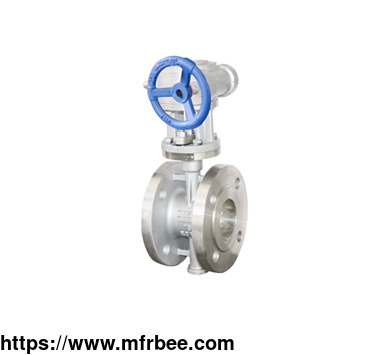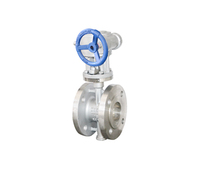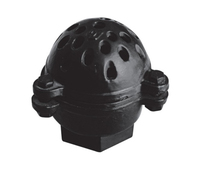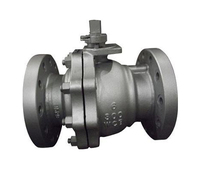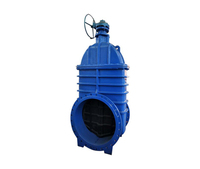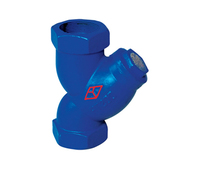ECCENTRIC BUTTERFLY VALVES
Specifications
Butterfly valves whose stem axis deviates from the center of the disc and the center of the body at the same time, and the sealing pair is an oblique cone are called eccentric butterfly valves.The
eccentric butterfly valve china and the upper and lower valve shafts are connected by special-shaped holes and special-shaped shafts. During the opening and closing process of the butterfly plate,
the function of the pinless link of the butterfly plate floating up and down, left and right is realized, which reduces the interference area between the butterfly plate and the valve seat, thus
greatly reducing torque. The floating structure of the butterfly plate realizes the production process of single eccentricity and the function of variable eccentricity. The inner cavity of the
eccentric sealed butterfly valve body is provided with an anti-disc overrun stopper to ensure that the disc is not in place when closed. The upper and lower valve shaft holes of the eccentric
butterfly valve body cavity and the upper and lower valve shaft holes of the butterfly plate are protected by bushings to prevent large particles in the medium from entering the valve shaft holes.
Eccentric Butterfly Valve Types
Eccentric butterfly valve is divided into single eccentric butterfly valve, double eccentric butterfly valve, triple eccentric butterfly valve and variable eccentric butterfly valve.
Single eccentric butterfly valve
In order to solve the extrusion problem between the disc and the valve seat of the concentric butterfly valve, the single eccentric butterfly valve is produced. Its structural feature is that the
shaft center of the valve stem deviates from the center of the butterfly plate, so that the upper and lower ends of the butterfly plate no longer become the rotation axis, dispersing and reducing
the excessive extrusion of the upper and lower ends of the butterfly plate and the valve seat.
Double eccentric butterfly valve
Double eccentric butterfly valve which is further improved on the basis of the single eccentric butterfly valve is widely used. Its structural feature is that the shaft center of the valve stem
deviates from the center of the disc and the center of the body. The effect of double eccentricity enables the disc to break away from the valve seat immediately after the double eccentric
butterfly valve wafer type is opened, which greatly eliminates unnecessary excessive extrusion and scratching between the disc and the valve seat, reduces the opening resistance and wear, and
improves the seat life.
Triple eccentric butterfly valve
To withstand high temperature, a hard seal must be used, but the amount of leakage is large; to achieve zero leakage, a soft seal must be used, but it is not resistant to high temperature. In order
to overcome the contradiction of the double eccentric butterfly valve, the butterfly valve was eccentric for the third time. The so-called third eccentricity means that the shape of the sealing
pair is not a positive cone, but an oblique cone.
Variable eccentric butterfly valve
The unique feature of the variable eccentric butterfly valve is that the stem shaft on which the disc is installed is a three-segment shaft structure. The two shaft segments of the three-segment
shaft valve stem are concentric, and the center line of the center shaft is deviated from the axes at both ends by a center distance. , the butterfly plate is installed on the intermediate shaft
section. Such an eccentric structure makes the disc become double eccentric when the disc is fully open, and becomes single eccentric when the disc is rotated to the closed position. Due to the
effect of the eccentric shaft, when it is close to closing, the butterfly plate moves a distance into the sealing cone of the valve seat, and the butterfly plate matches the sealing surface of the
valve seat to achieve reliable sealing performance.
Eccentric Butterfly Valve Installation
1. Before installation, it is necessary to carefully check whether the valve's mark and certificate meet the requirements for use, and should be cleaned after verification. Valves that are not
installed and used should be stored in a dry room. Valves that have been kept for a long time should be cleaned regularly, dried and coated with anti-rust oil. Blind plates should be used at both
ends of the valve to protect the flange sealing surface.
2. Install according to the flow direction of the medium; give priority to horizontal installation.
3. The connecting bolts between the butterfly valve and the pipeline should be tightened several times in the opposite direction during installation, and should not be tightened at one time to
prevent the flange connection from leaking due to uneven force.
4. When installing the eccentric butterfly valve, the butterfly plate should be in the closed position to prevent debris from entering the valve cavity and rubbing the sealing surface. When the
user wants to test the pressure, the two ends should be installed with flanges and then tested.
5. When the valve is connected to the pipeline, it is required to use butt welding steel flange or special flange for butterfly valve on the pipeline. If flat welded steel flanges are used, the
inner hole of the flange must be as large as the inner hole of the gasket to ensure the effective sealing surface of the gasket.
6. The opening and closing stroke of the control mechanism has been adjusted when the electric butterfly valve leaves the factory. In order to prevent the wrong direction when the power is turned
on, the user must manually reach the beginning of 1/3 of the closing position before turning on the power for the first time. And check whether the direction of the indicator plate is consistent
with the opening direction of the valve.
7. When the eccentric butterfly valve is in use and there are any faults, it should be stopped immediately.
- Country: Afghanistan
- Address: Room A086, No.2 Bonded Port Area, Xinyingwan District, Yangpu Economic Development Zone, Hainan Province
- Contact: Michael Zhang
